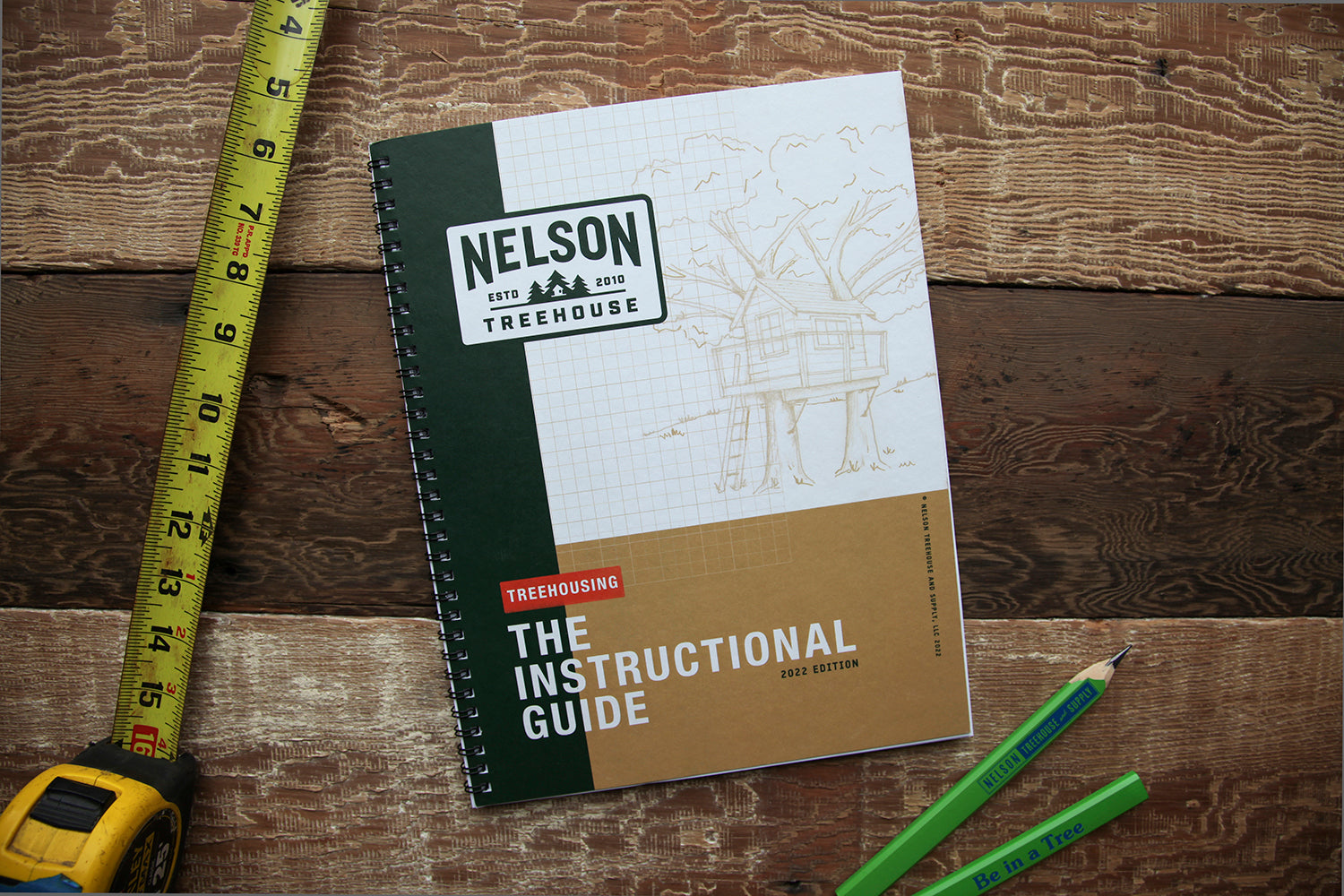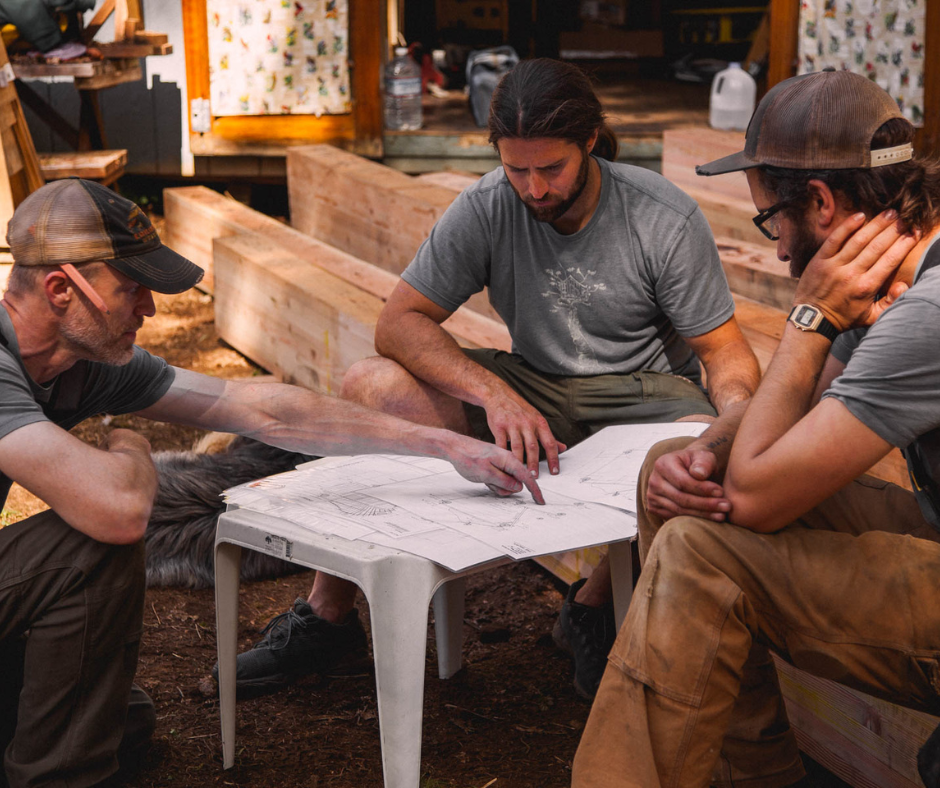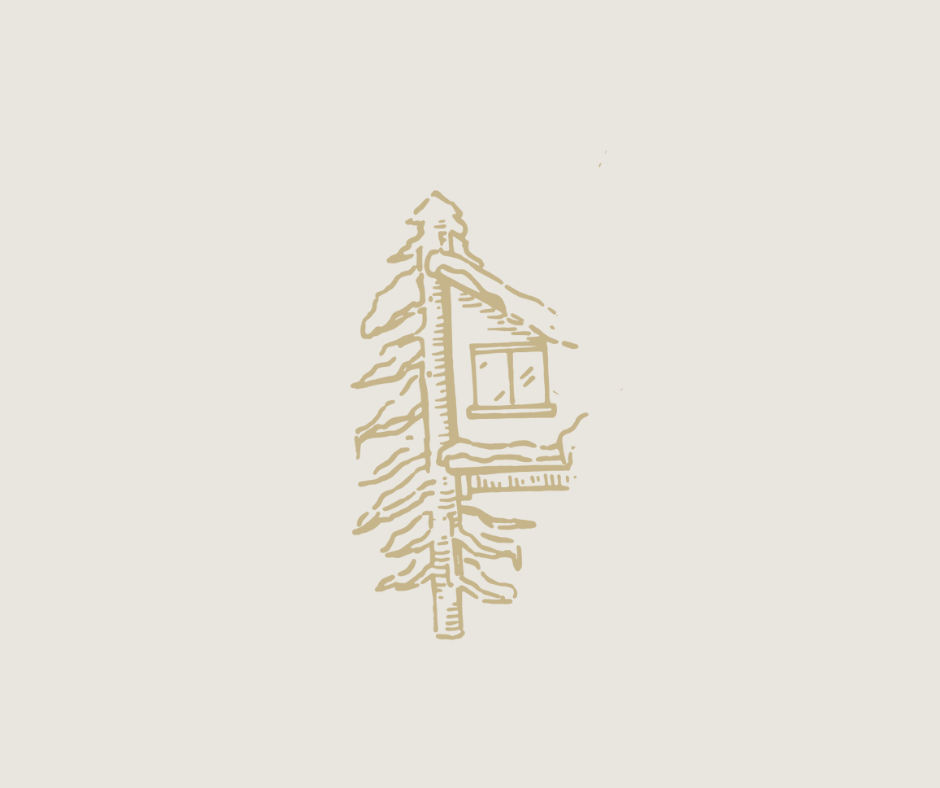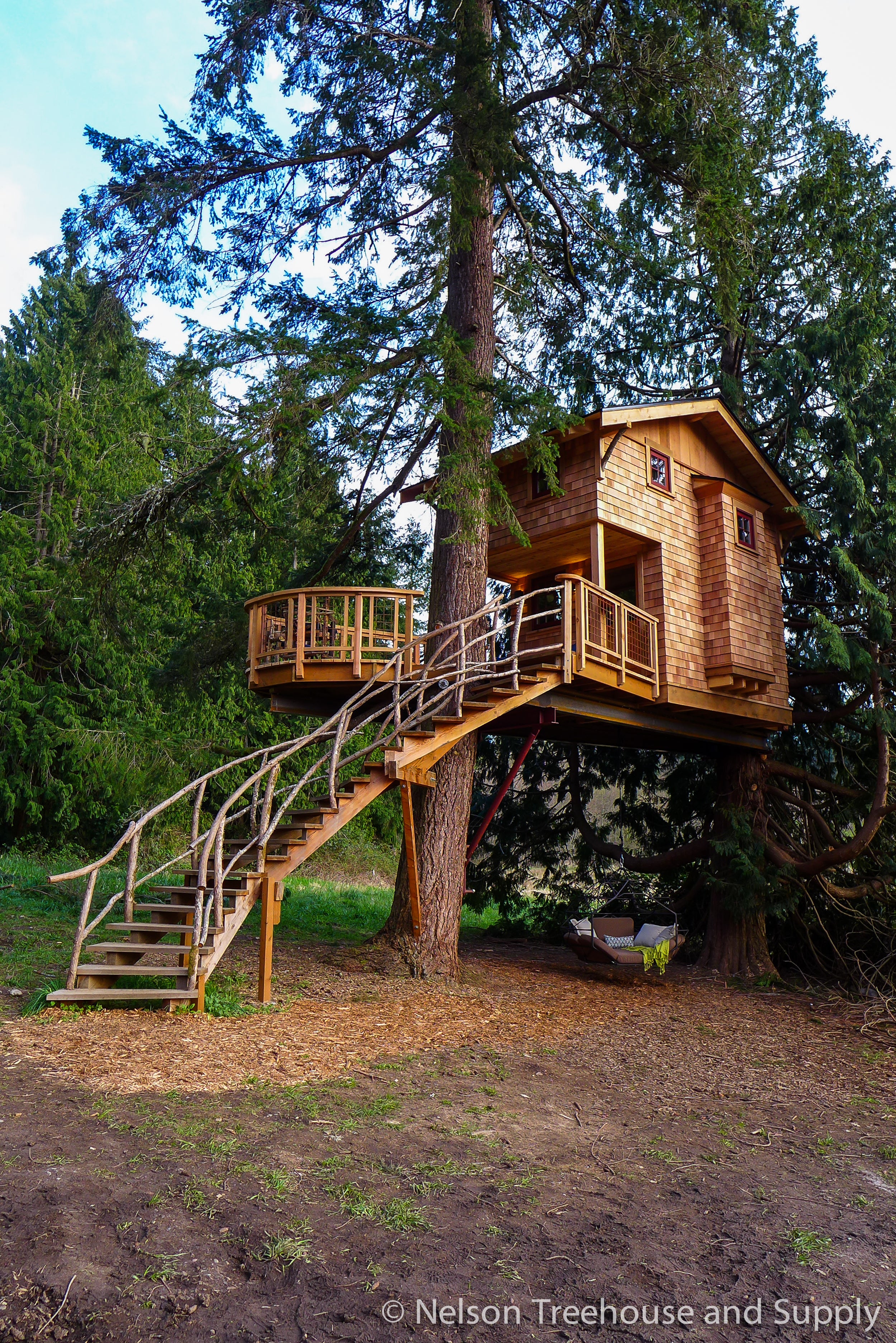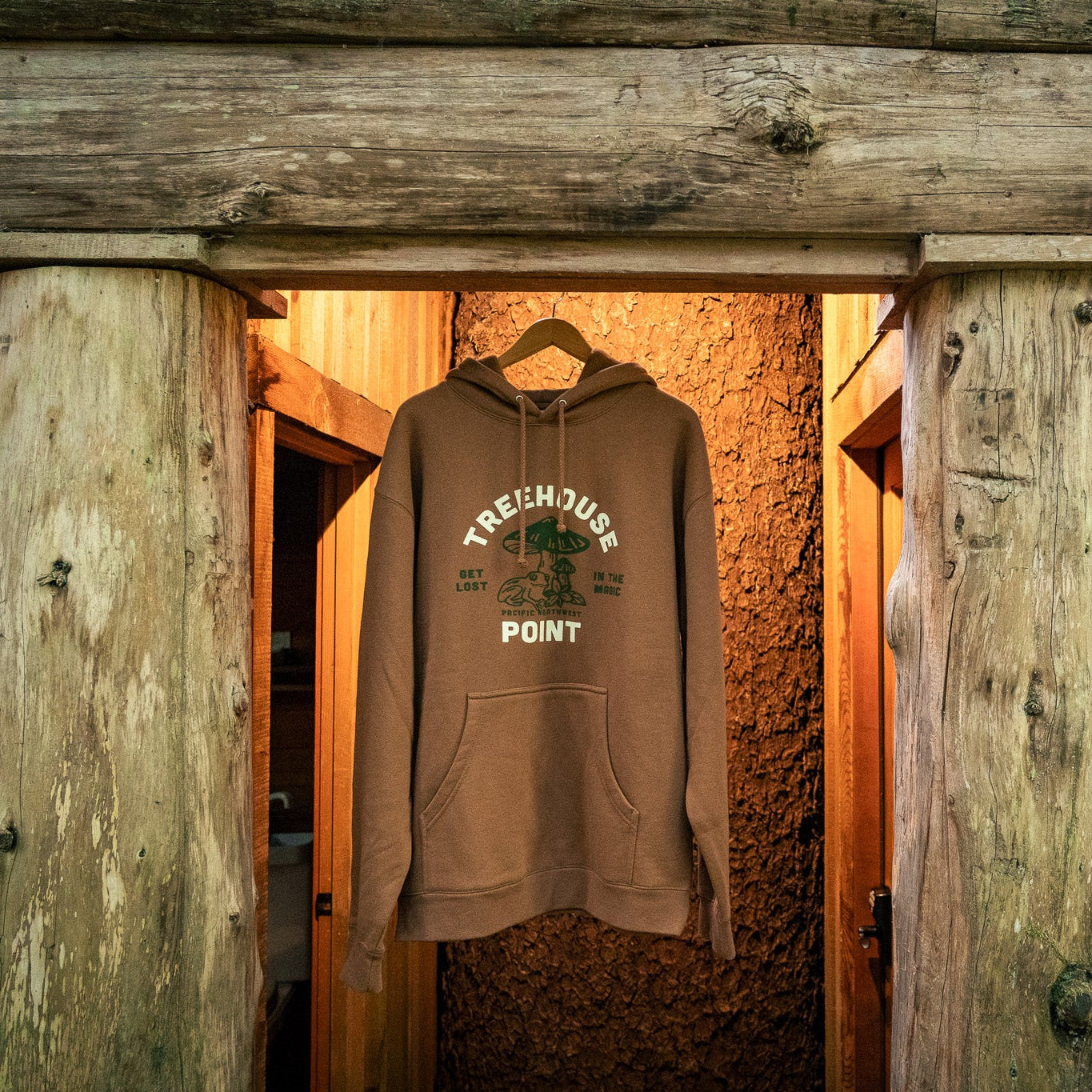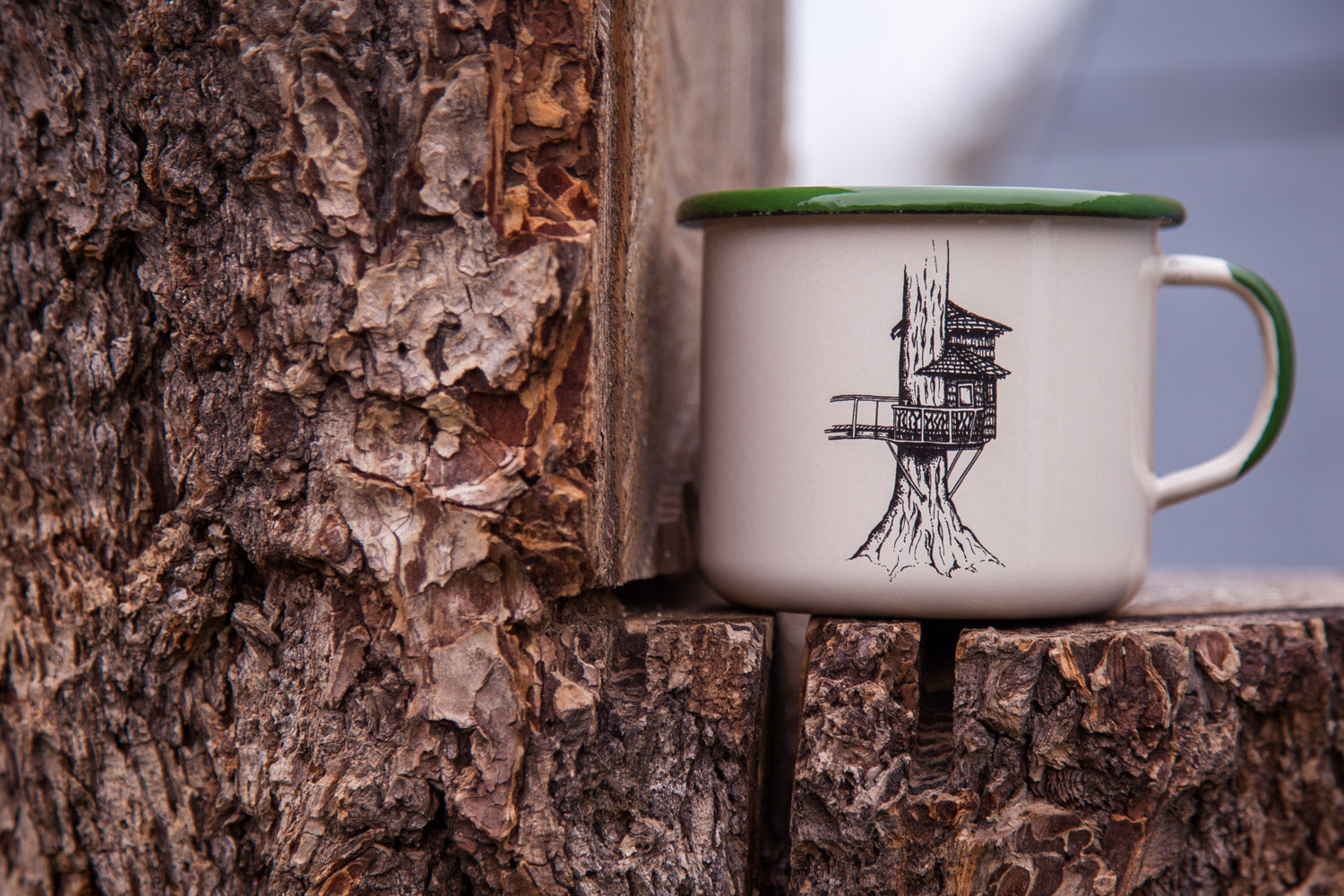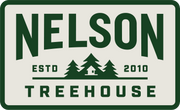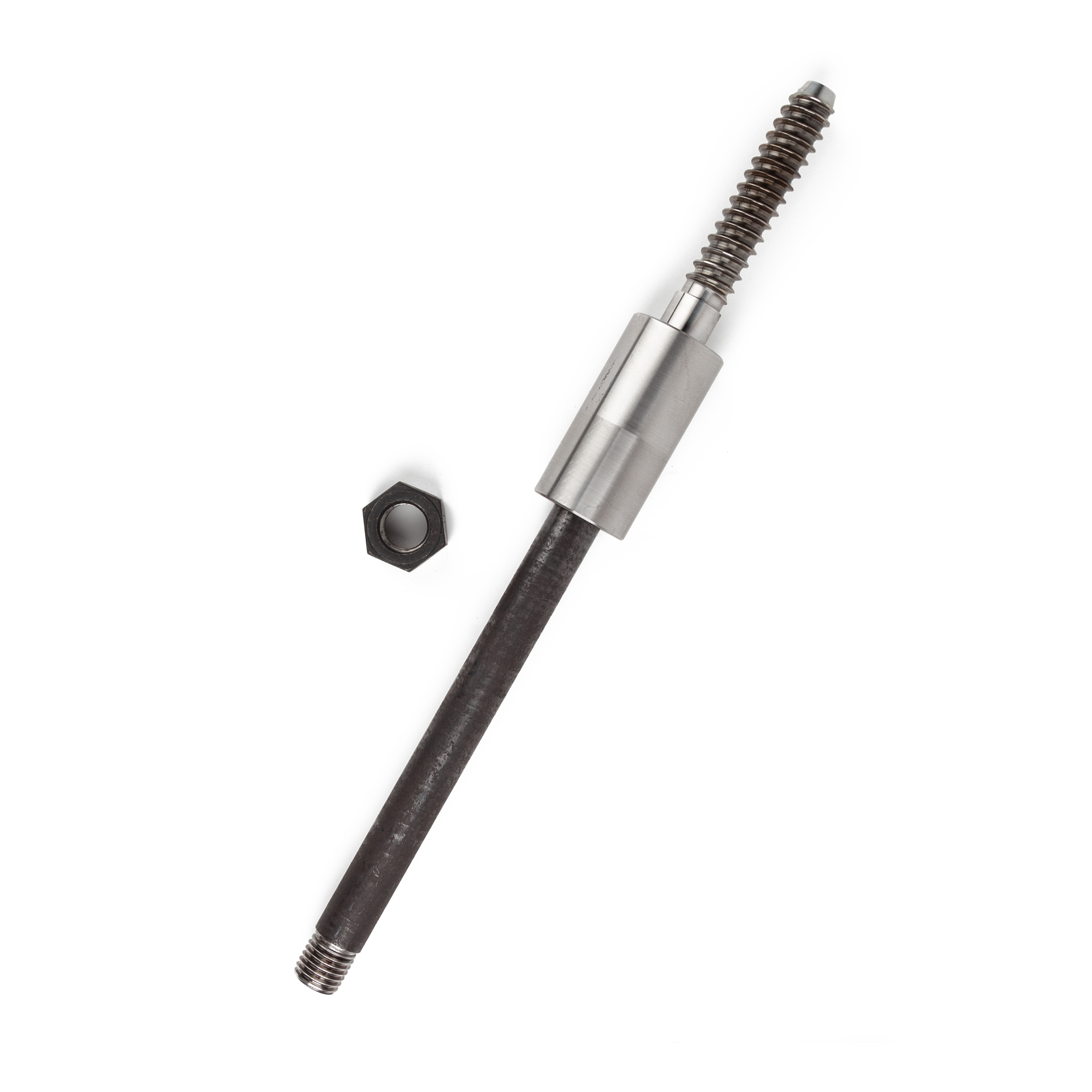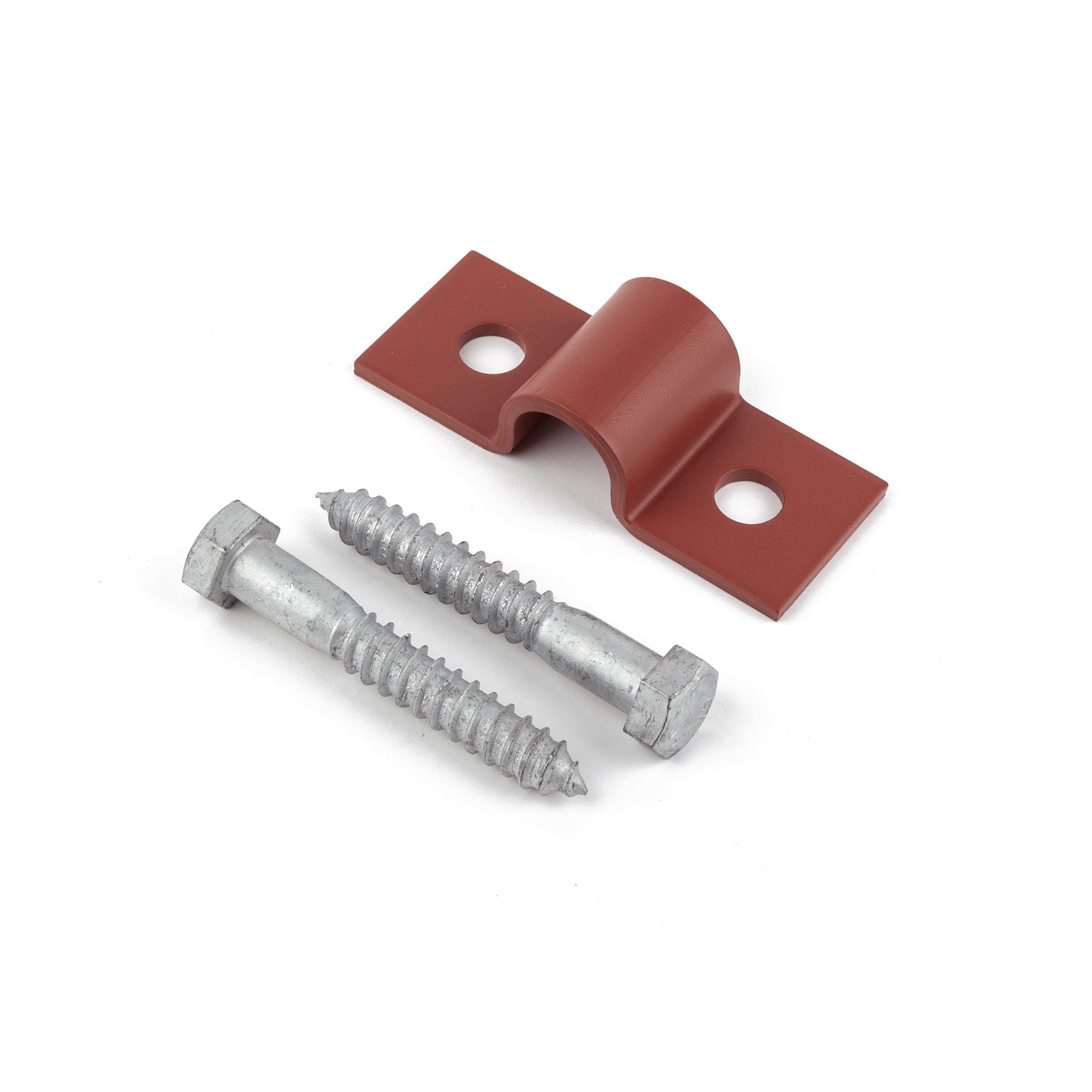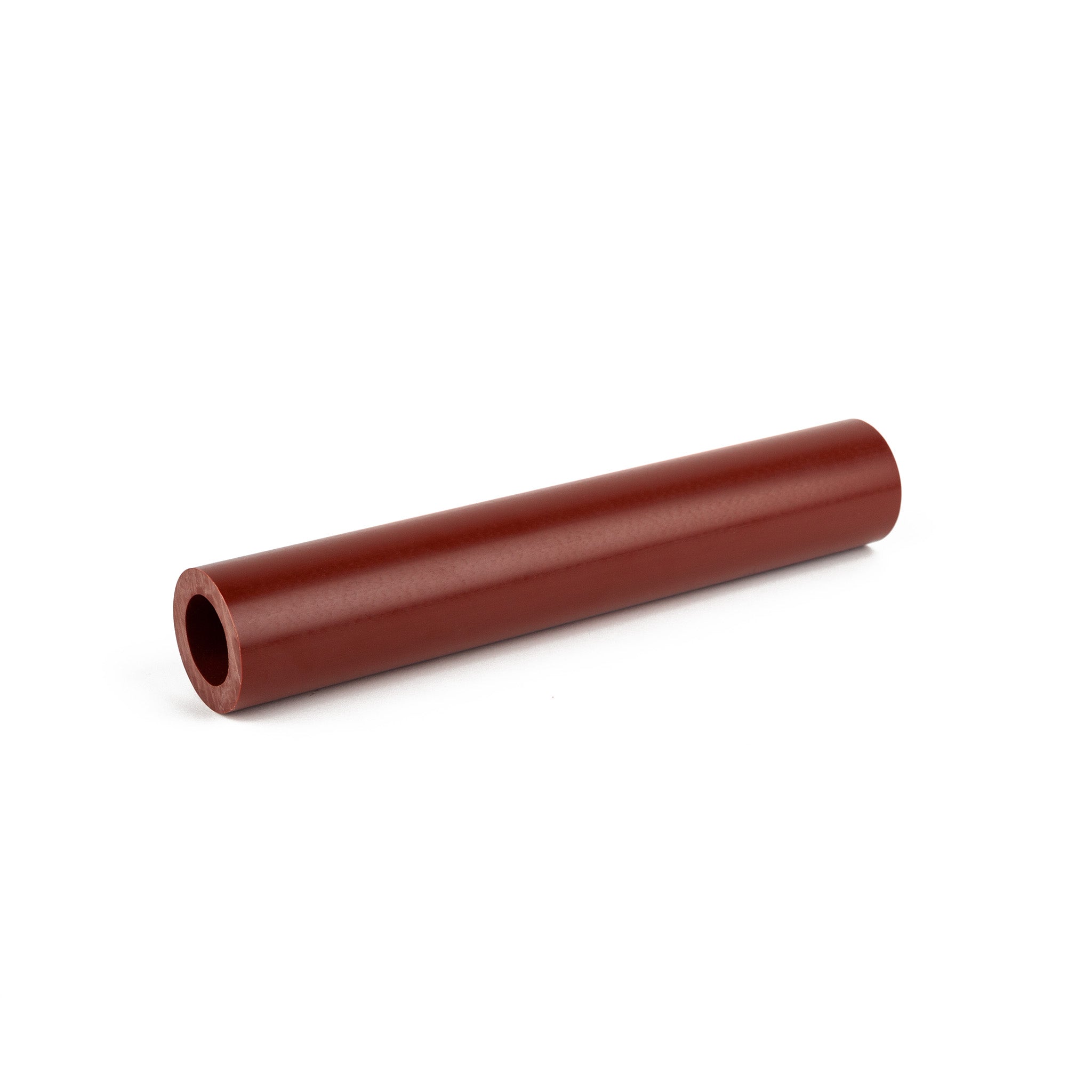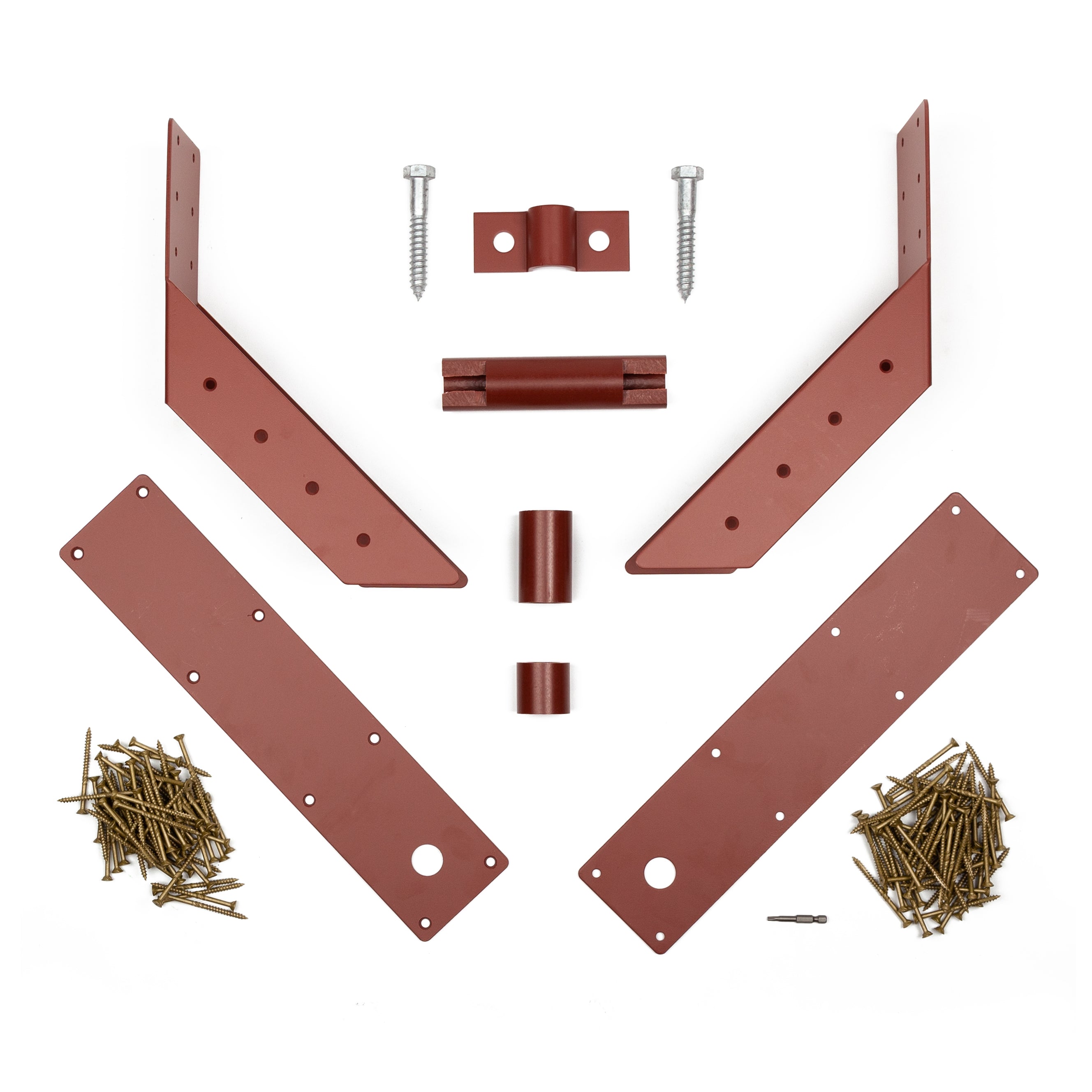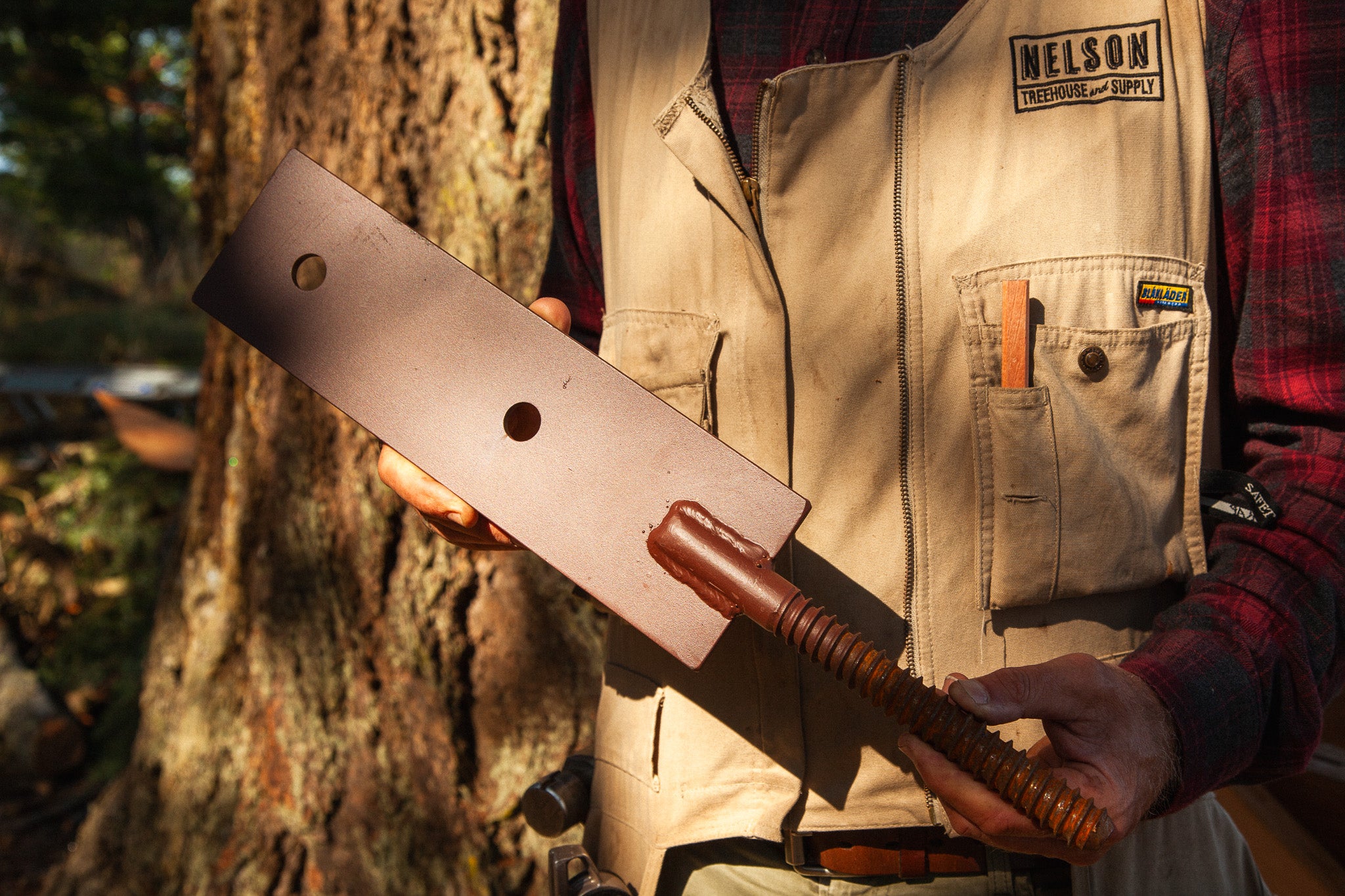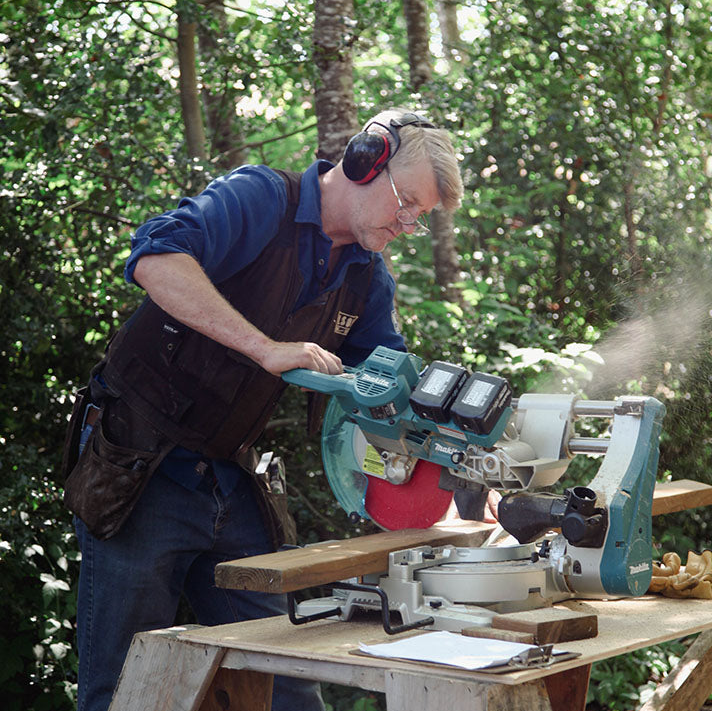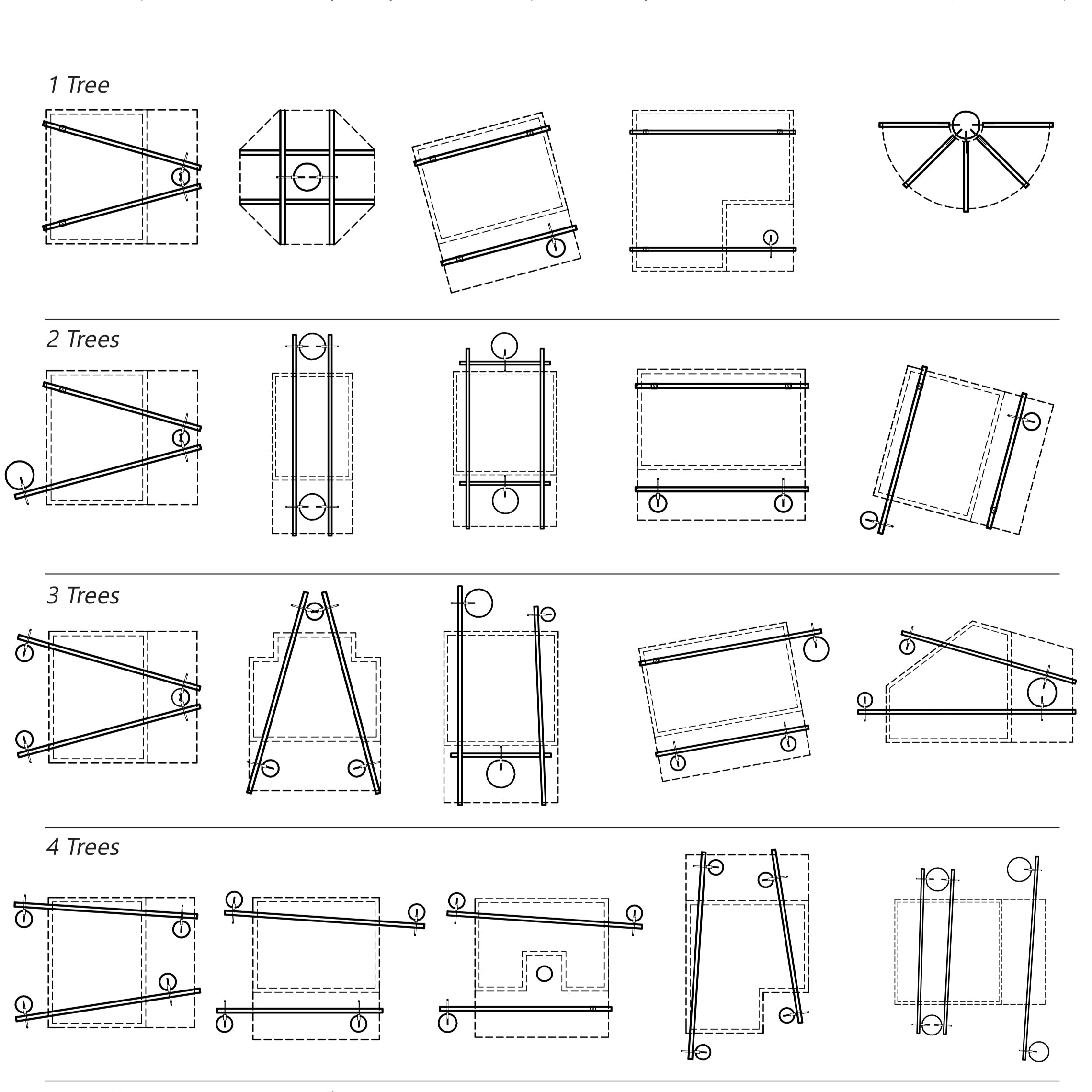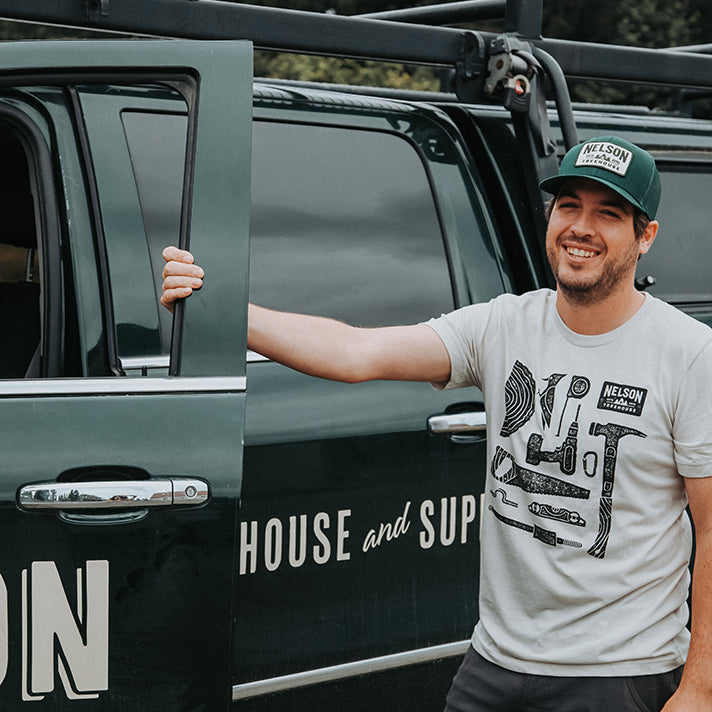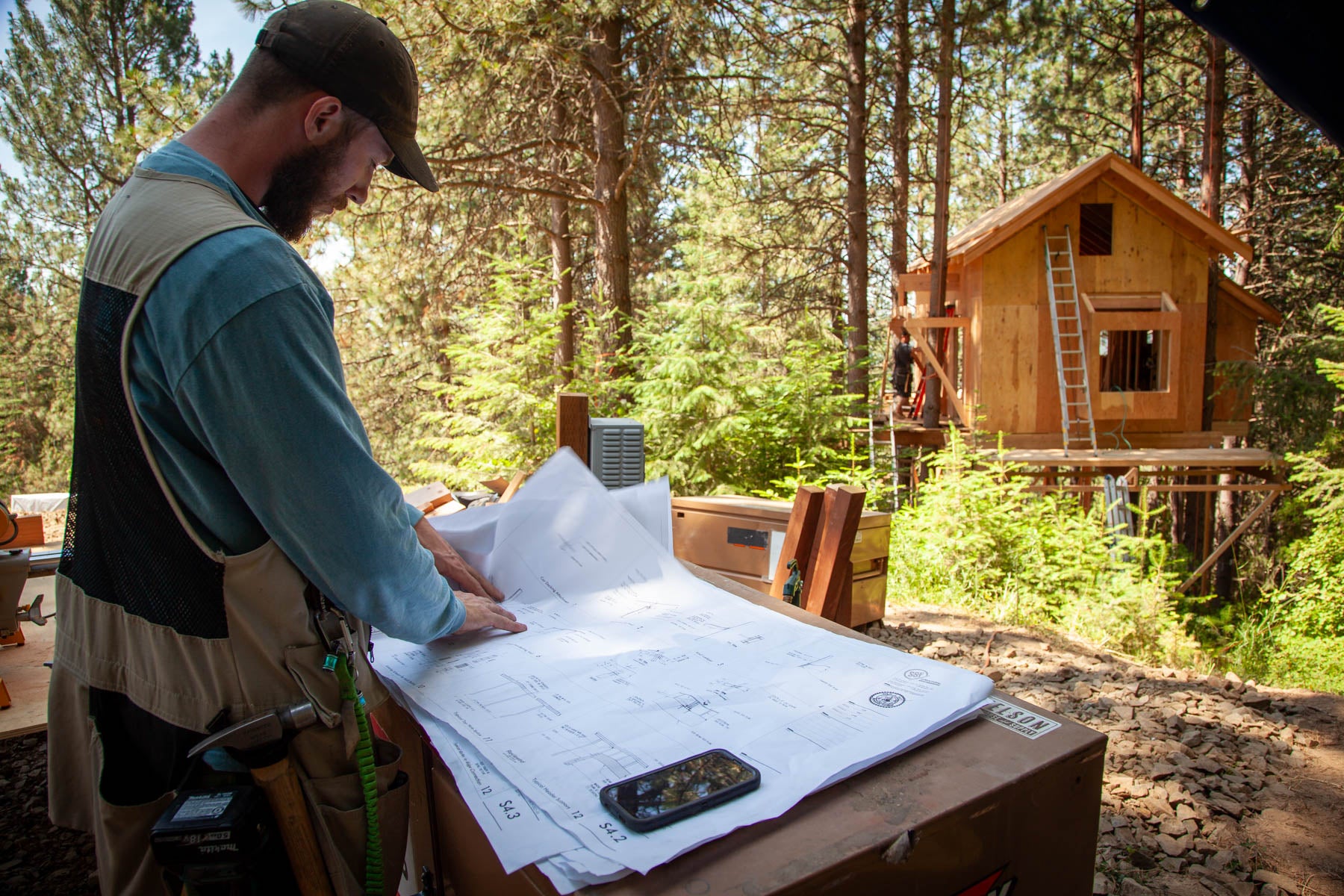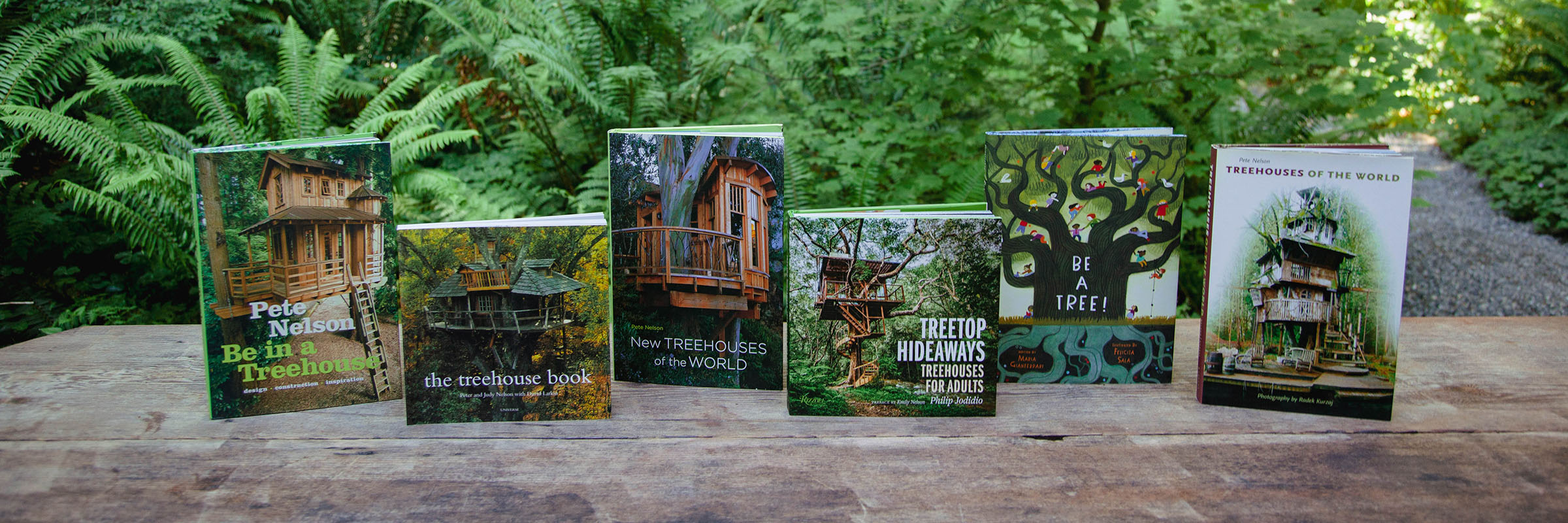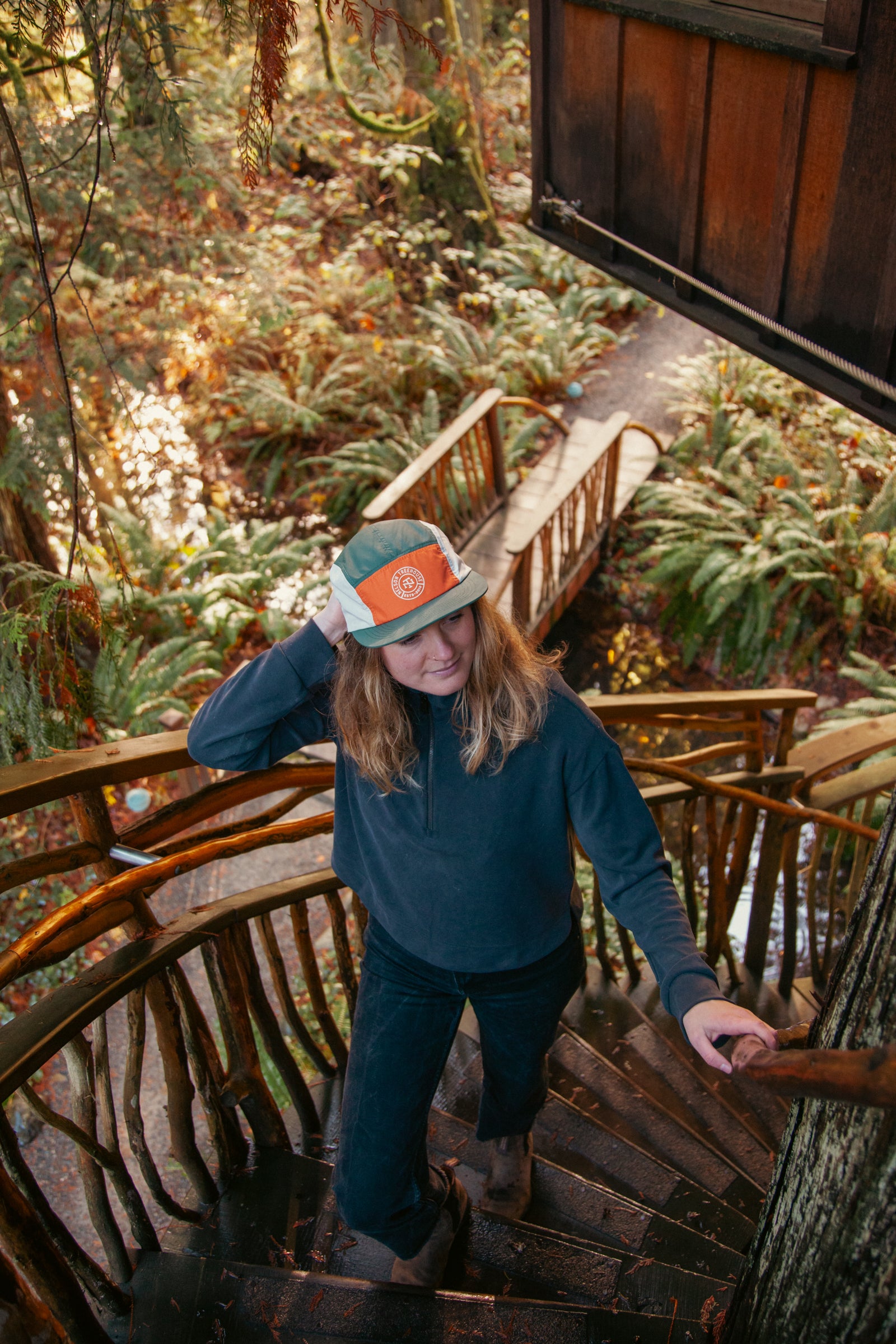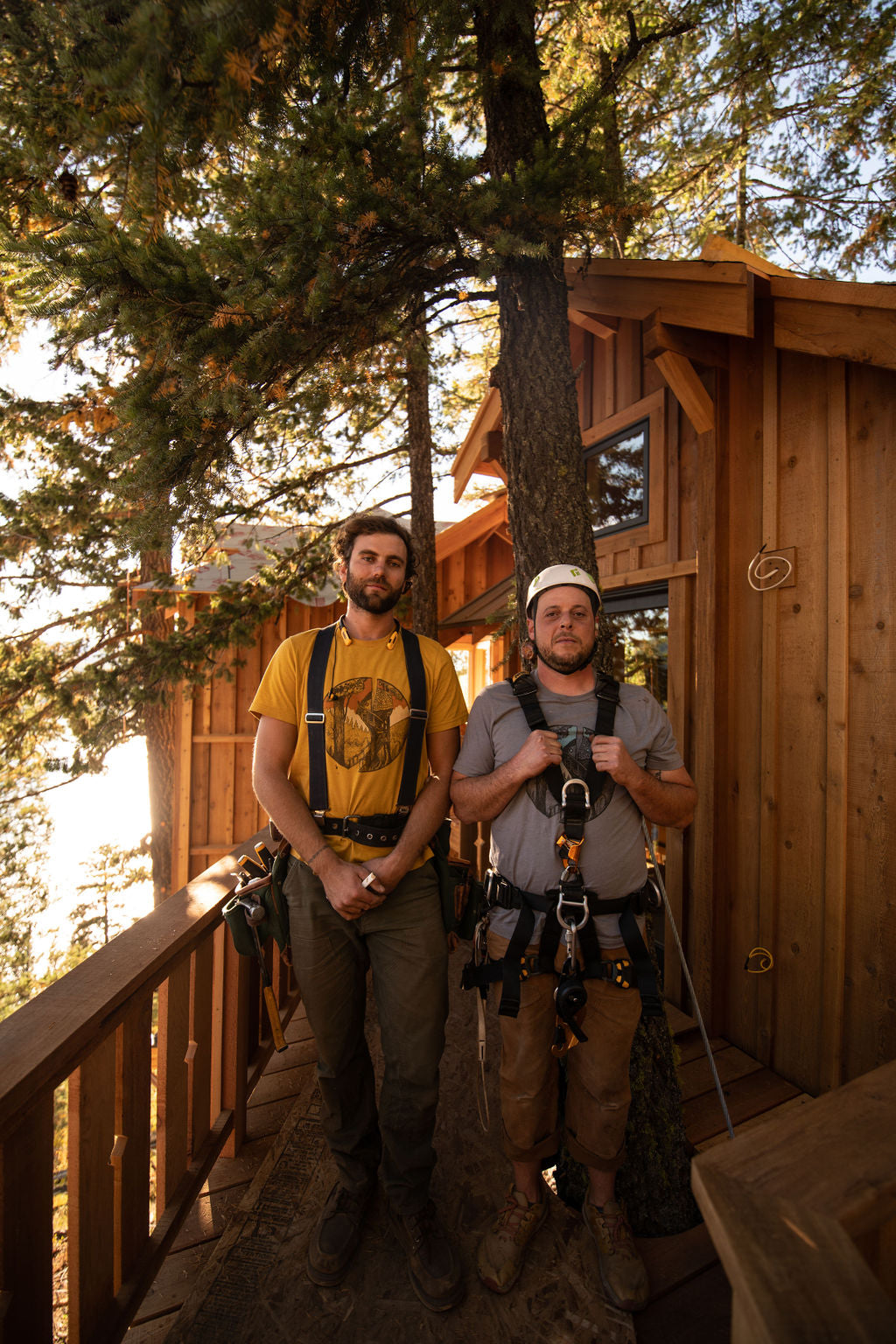Frequently Asked Questions about our hardware
What makes Nelson Treehouse hardware the best on the market?
The Nelson Treehouse science of building safely and sustainably up in the trees is founded on the use of the highest-quality, heavy-duty, specialized treehouse hardware. We have spent over 30 years consulting with and working alongside carpenters, arborists, and engineers to develop the hefty hardware we trust in every treehouse we build.
Our treehouse hardware is comprised of heavy, heat-treated steel – a single standard-limb TAB weighs 18 pounds. It’s professional-grade, but DIY-friendly: hundreds of backyard treehouse-builders around the world have used our hardware to create the treehouse of their dreams. Our standard-limb and heavy-limb hardware is fabricated in the USA.
Why should I use specialized treehouse hardware?
Treehouses are elevated structures that rest on living organisms. Despite their playful spirit, they can weigh tens of thousands of pounds, making the connection between the tree and treehouse critical for safety and sustainability.
When factoring in tree growth, movement, snowload, wind, etc. the forces affecting your treehouse are substantial. The key to a successful treehouse project is accounting for these naturally occurring factors.
When properly installed, our treehouse hardware provides a safe, sustainable, and strong support system for your treehouse without causing irreparable damage to the trees. Investing in specialized treehouse hardware is key to ensuring the structural integrity of your build.
For most DIY backyard projects, Tree Fort or Standard Limb Hardware will suffice. Our Heavy Limb Hardware is typically used for larger, professional builds.
Which hardware system should I use?
This will depend on the scale of your project as well as factors including tree species, snowload, wind exposure and more. A good rule of thumb is that the Tree Fort Hardware System is used in kid-scale, backyard projects. Standard Limb Hardware is used for more "adult" scale treehouses that may have a loft, electricity and is, generally speaking, more than 10'x12' in size. Heavy Limb Hardware is used for most commercial grade projects - large in scale and typically structurally engineered.
How do I install my hardware?
You will receive an instant digital download with installation instructions to your email after purchase. You can also visit the Hardware Installation Instruction page for more information.
What are some best practices when designing & building a treehouse?
- Clearance must be provided between your beams and trees. Follow the instructions provided with your hardware to place beams where they are intended to be on the TABs.
- Keep joists 6" away from the bark of a tree.
- Keep walls at least 12" and roofs at least 7" away from the tree.
- Trim decking 2" back from the bark of the tree. Repeat this as the tree grows or if rubbing occurs.
- If you want a weather-tight building envelope, keep trunks and branches from penetrating the envelope. It's very difficult to seal the area where tree limbs enter the interior, resulting in perpetual moisture issues.
- Beware of using excessive beam or joist cantilevers. Not only do they have a ‘diving board’, bouncy effect, but the loads on the beams and hardware will multiply.
- Knee braces should always be opposing each other or balanced, or used in a static situation. A single knee brace in a dynamic scenario can create a ‘jacking’ effect, moving the platform sideways over time.
- When using a Wood Yoke design, tremendous forces can occur in the struts and lower TABs. These should only be lightly loaded, and preferably engineered.
- Protecting the critical root area around the trees is imperative. It is best to place 6"-12” of wood chips over the work area, and be mindful when digging or using machinery
Our Hardware Is strong
We have 3 different treehouse hardware systems: Tree Fort (TF), Standard Limb (SL) and Heavy Limb (HL). When installed correctly and backed up with either a Cable or a Strut, this treehouse hardware is incredibly strong, as shown below:
Gravity capacity of Nelson Treehouse TABs*
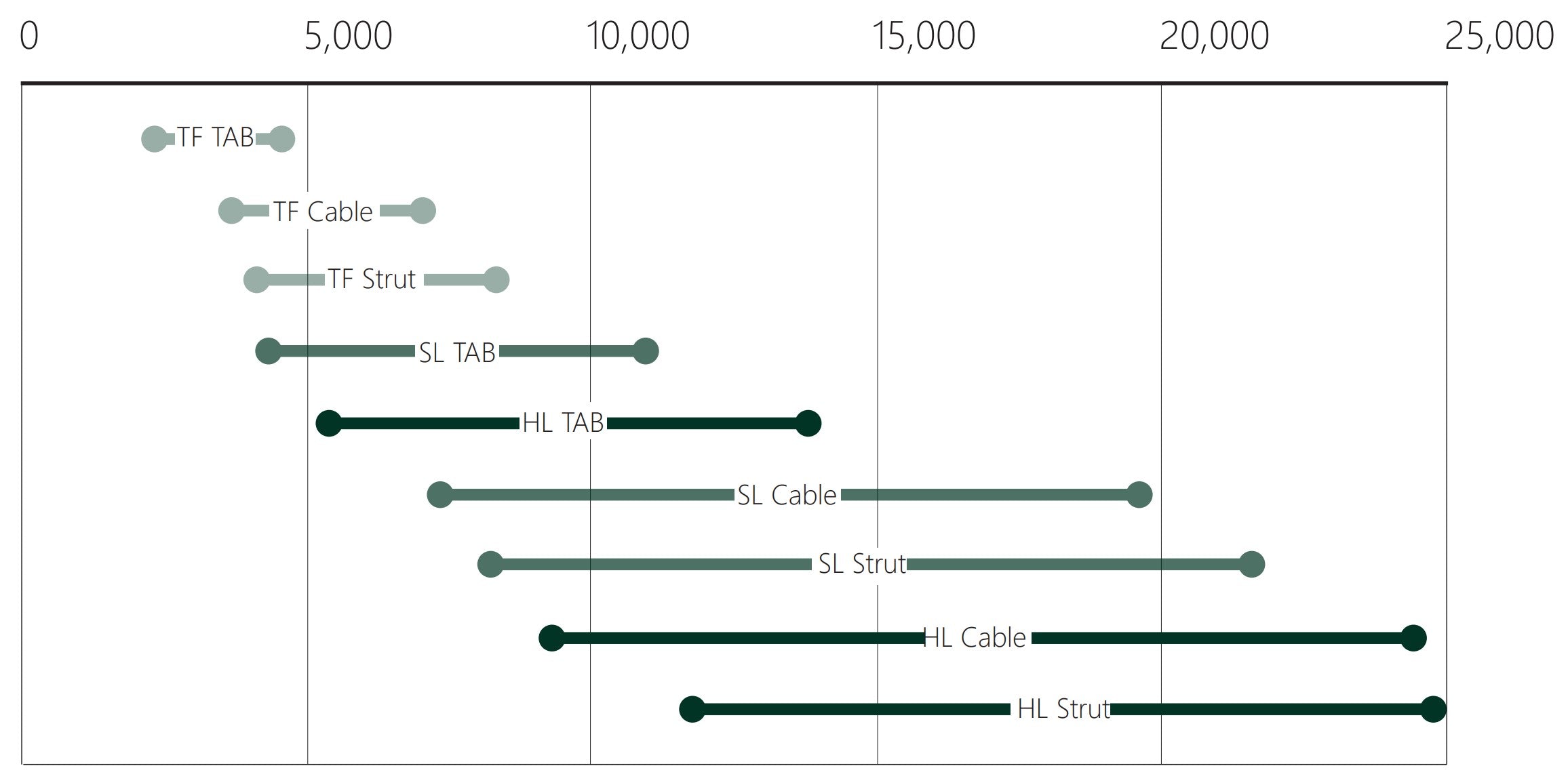
Multi-column
Build with the master
Watch our YouTube series of Treehouse Master, Pete Nelson building a platform using our Tree Fort Hardware
platform examples
These examples illustrate common layouts for beams and platforms, featuring various combinations of trees, beams, & posts.
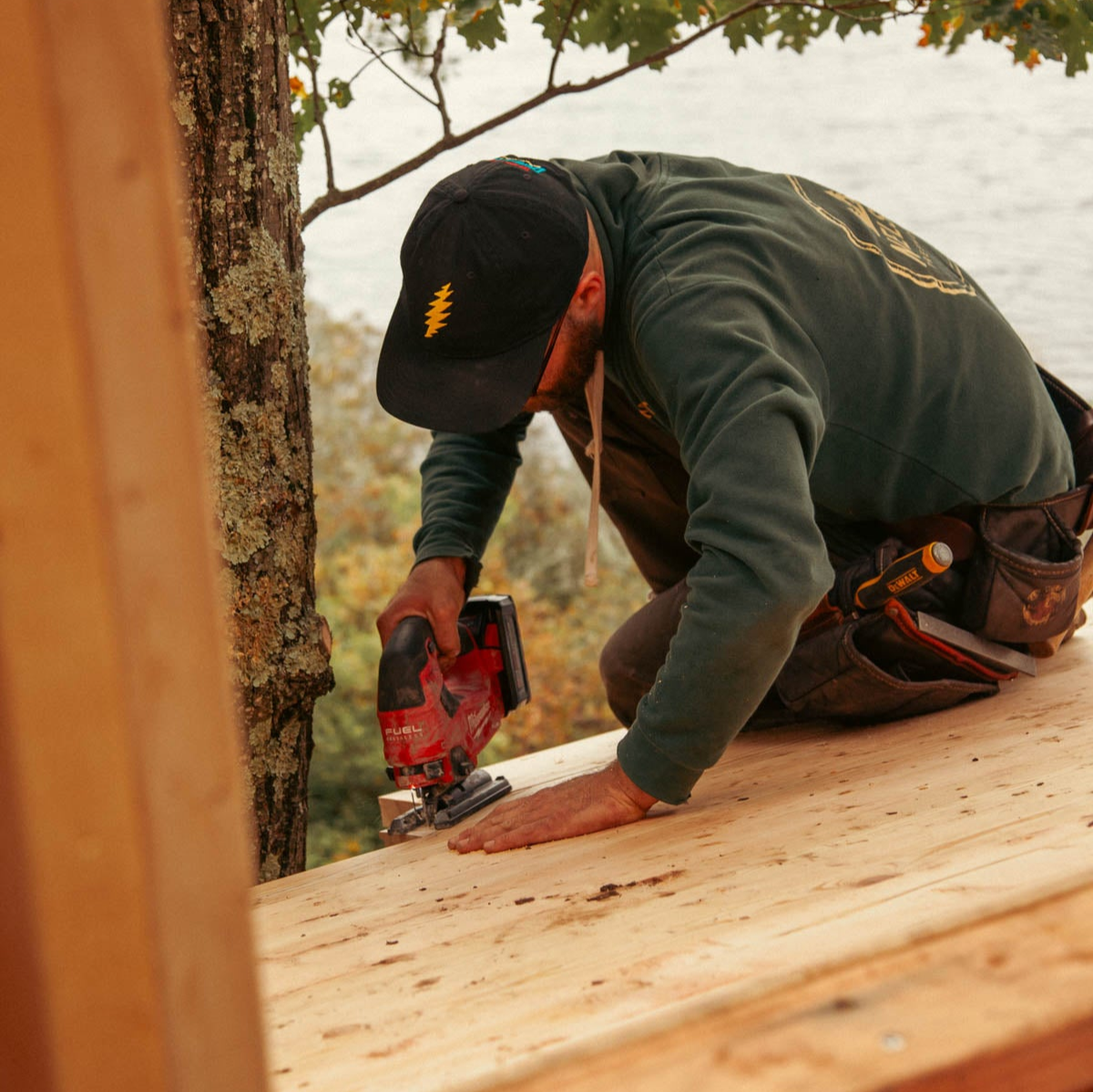
Get inspired to build
Check out our Nelson Treehouse blog for tips, tricks and inspiration for your treehouse project!
More frequently asked questions
Do you rent the specialized bits or tools?
In order to participate in the rental program, you must clarify in an order note or email before shipment that you would like a rental bit or auger. Then if they are returned, undamaged within 30 days, you receive a 60% refund. NOTE: The Tree Fort Installation Kit is not eligible for the rental program.
We do not rent any tools at this time.
Check out amazing projects from DIY-ers who’ve used our hardware:
DIY-Builders Craft Incredible Treehouses Around the Country
Enormous tree-deck built by a father for his daughter's wedding
Projects by Treehouse DIY-ers!
For our tips on hardware installation and building practices, we recommend watching these tutorial videos:
What is a TAB? (Treehouse Attachment Bolt)
Installing a Treehouse Suspension System
And checking out these blog posts:
Hardware Highlight: Treehouse Attachment Bolt
Testing the Strength of Treehouse Attachment Bolts
One-Stop Shop for Your Treehouse Build
Pete Nelson's Treehouse Designs for DIY-ers
6 Steps of the Nelson Treehouse Design Process
Technology That's Revolutionizing the Way We Build Treehouses
Treehouse Framing DIY Tutorial: Your First Rake Wall
How to Build a Fibonacci Bench
We have more videos on treehouse technique, tips, and timelapses on our YouTube channel.
Take to the Trees
We're here to support your treehouse projects every step of the way. Whether you need quick advice or in-depth guidance, we offer consultations by phone or email. When you purchase our designs or hardware, you'll receive a complimentary 15-minute consultation to ensure you have the right equipment for your project.
Disclaimer & Limitations
Be in a Tree LLC and Nelson Treehouse and Supply disclaim and limit any representations and warranties as follows:
- The load that this treehouse hardware can bear depends on many factors, including the species and health of your tree(s). Tree house maintenance is required every year to ensure the structure, and tree(s) remain safe and secure for years to come, and more importantly that its users are not put at risk. Perform frequent inspections and maintenance.
- We highly recommend consulting with Nelson Treehouse, a certified arborist, and a structural engineer before starting your project, especially if your treehouse will contend with snow loads, wind, earthquakes, or other extreme environmental factors.
- Use hardware at your own risk. Improperly installed hardware can pose a significant risk to all parties involved including (but not limited to) the tree, construction workers, and the users of the treehouse. Be in a Tree LLC and Nelson Treehouse and Supply disclaim and assume no liability, are not responsible for property damage, personal injury or consequential damages alleged to be the result of use of this product.
